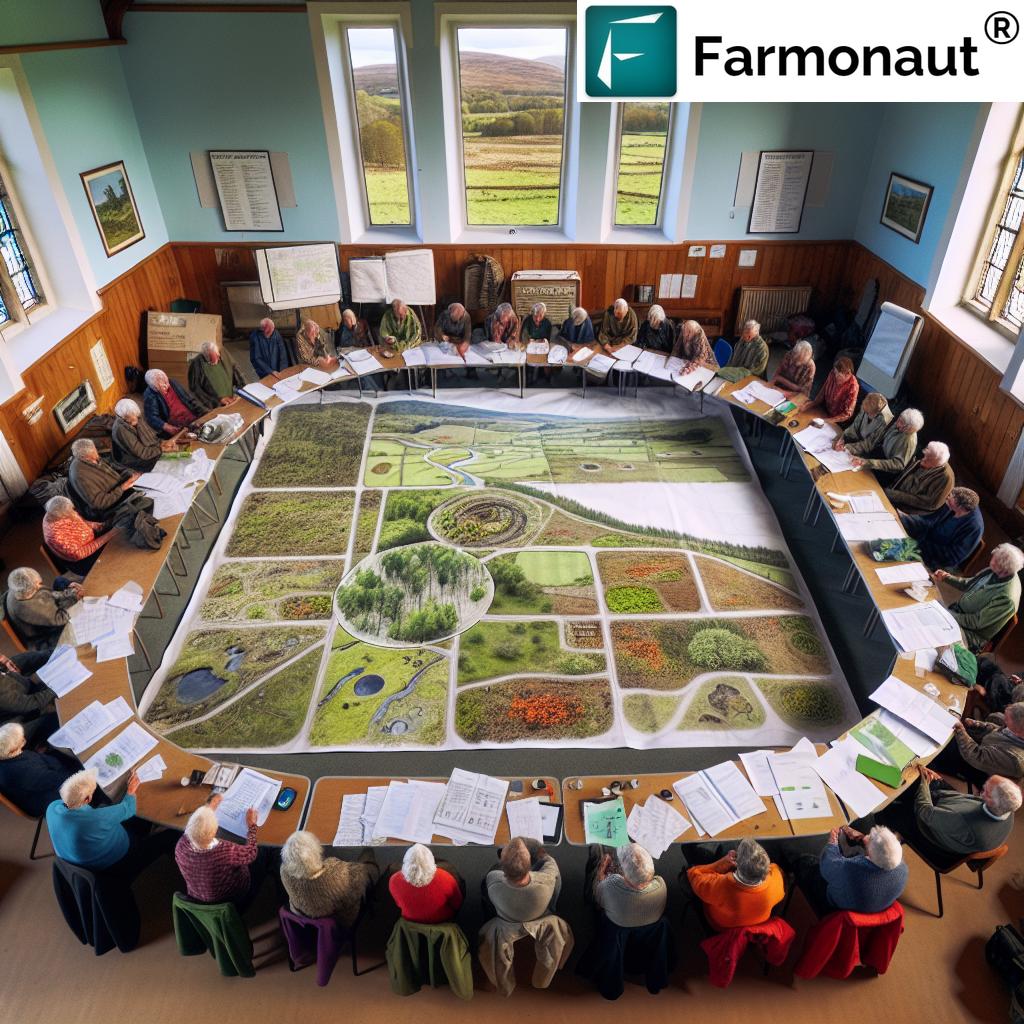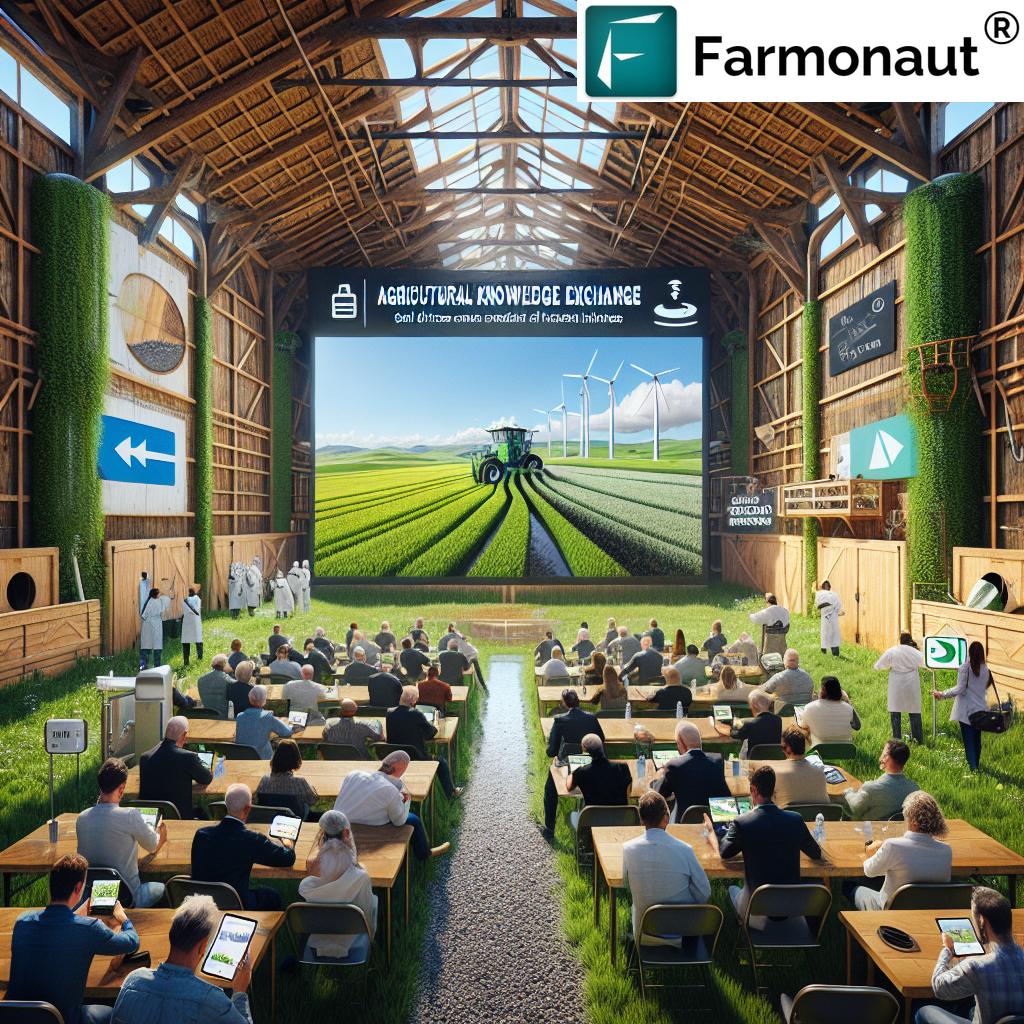Scottish Forestry EIA Transparency: Balancing Woodland Creation and Community Engagement in the Borders
“Scotland’s forestry EIA process is under scrutiny, with over 50% of new plantations dominated by non-native Sitka spruce.”
In the picturesque Scottish Borders, a heated debate is unfolding that strikes at the heart of Scotland’s ambitious woodland creation goals and the need for environmental conservation. As we delve into this complex issue, we’ll explore the challenges faced by local communities, the intricacies of the Environmental Impact Assessment (EIA) process, and the delicate balance between commercial forestry interests and ecological preservation.
The Call for Transparency in Scottish Forestry
At the center of this controversy is the Lilliesleaf, Ashkirk and Midlem Community Council (LAMCC), which has raised significant concerns about a proposed 400-hectare woodland scheme at Todrig. Their call for a halt to the project pending proper ecological, environmental, and landscape impact assessments highlights a growing unease among local communities about the rapid expansion of woodland creation schemes across the Scottish Borders.
The LAMCC’s spokesperson articulated a belief that resonates with many in the region: “It is our belief that, cumulatively, a significant number of new woodland schemes are being created in Scottish Borders, almost by stealth, with a consequent long-term impact for our region.” This statement underscores the urgent need for greater transparency and community engagement in the forestry planning process.

The Environmental Impact Assessment (EIA) Screening Process
At the heart of this debate lies the EIA screening process, a crucial step in determining whether a full Environmental Impact Assessment is required for woodland creation schemes. The Environmental Rights Centre for Scotland (ERCS) has brought to light some startling statistics: between 2019 and 2023, Scottish Forestry received 305 applications for tree plantations, yet only required an EIA for one.
This revelation has sparked concerns about the robustness of the current screening process and its ability to adequately assess the potential environmental impacts of large-scale forestry projects. Dr. Ben Christman, legal director of ERCS, voiced these concerns, stating, “Scottish Forestry is in breach of the law by refusing to publish screening opinions. Their secrecy makes it very difficult for members of the public to find out about screening opinions and challenge them in court.”
The Dominance of Sitka Spruce and Its Implications
One of the primary concerns raised by the LAMCC and other environmental groups is the overwhelming dominance of Sitka spruce in new woodland creation schemes. This fast-growing, non-native species is popular for timber production but raises questions about biodiversity and long-term ecological impact.
In the case of the Todrig Farm project, calculations based on the November 2024 plans show that 85% of the planting area will be commercial conifer, with 72% being Sitka spruce. This skew towards commercial timber production at the expense of native species and diverse ecosystems is a recurring theme in many woodland creation schemes across Scotland.
The LAMCC spokesperson emphasized the need for balance: “Repeatedly, we have seen planting schemes that are totally skewed towards the quickest short-term commercial gain – i.e., the domination of Sitka – regardless of their impact on biodiversity and landscape. There should be a proper balance with a range of native trees.”
Community Engagement and Information Access
A significant challenge faced by community councils and local residents is the difficulty in accessing timely information about woodland creation schemes in their area. The current process often leaves communities feeling excluded from meaningful consultation and unable to provide input at crucial stages of project development.
The LAMCC spokesperson highlighted this issue: “As a Community Council, it feels as if the policies and processes underpinning the creation of new woodland schemes in Scotland largely pay lip service to community involvement and consultation. It is unrealistic to expect Community Council members to have the necessary time, knowledge, resources, and expertise to fully understand either the detailed impacts of particular schemes or the processes that are followed.”
The Role of Scottish Forestry and Potential Conflicts of Interest
Scottish Forestry, as both regulator and decision-maker, finds itself in a complex position. Tasked with achieving the government’s ambitious woodland creation targets while also ensuring environmental protection and community engagement, the organization faces scrutiny over potential conflicts of interest.
The LAMCC raised this concern, stating, “The role of Forestry Scotland appears to be so multi-faceted that it inevitably has a conflict of interest being both the regulator and decision maker while at the same time being charged with achieving the Government’s ambitious programme for the creation of new woodland schemes.”
In response to these concerns, a Scottish Forestry spokesperson emphasized their commitment to transparency and community engagement: “We are fully committed to being an open and transparent organization. Applicants putting forward woodland creation proposals are required to engage with local communities as part of the process, furthermore details of schemes under consideration are posted on our public register on our website.”
Balancing Commercial Interests and Environmental Conservation
The tension between commercial forestry interests and environmental conservation lies at the heart of this debate. While woodland creation schemes offer potential economic benefits and contribute to carbon sequestration goals, there are valid concerns about their impact on existing ecosystems and biodiversity.
The LAMCC spokesperson highlighted the importance of thorough ecological assessments: “Given the location, size and the presence of valuable habitat within the site, a proposal of this scale will have significant impact on landscape and ecology at the very least, along with cumulative impacts on the surrounding areas. LAMCC needs to be assured that thorough ecological and environmental impact assessments have been completed.”
This call for comprehensive ecological surveys underscores the need for a balanced approach that considers both commercial viability and environmental preservation. It also highlights the potential role of advanced technologies in monitoring and assessing the environmental impact of forestry projects.
For instance, carbon footprinting tools can play a crucial role in quantifying the environmental impact of woodland creation schemes. These tools can help forestry managers and policymakers make informed decisions about the carbon sequestration potential of different planting strategies, balancing commercial timber production with ecological considerations.

The Role of Technology in Sustainable Forestry Management
As we grapple with these complex issues, it’s worth considering how advanced technologies can contribute to more sustainable and transparent forestry management practices. Satellite-based monitoring systems, AI-driven analytics, and blockchain technology offer promising solutions to some of the challenges faced by the Scottish forestry sector.
Crop plantation and forest advisory services powered by satellite imagery and AI can provide valuable insights into forest health, growth rates, and potential environmental impacts. These tools can help forestry managers make data-driven decisions about planting strategies, species selection, and resource allocation, potentially leading to more balanced and sustainable woodland creation schemes.
Proposed Improvements to the EIA Screening Process
To address the concerns raised by community councils and environmental groups, several improvements to the current EIA screening process have been proposed:
- Increased transparency through the timely publication of screening opinions and other relevant documents
- Enhanced community engagement at earlier stages of the planning process
- More comprehensive ecological assessments, including year-round surveys to capture seasonal variations in biodiversity
- Greater consideration of cumulative impacts from multiple woodland creation schemes in a region
- Integration of advanced monitoring technologies to provide more accurate and timely data on environmental impacts
These proposed improvements aim to strike a better balance between woodland creation goals, commercial interests, and environmental conservation. By enhancing transparency and community involvement, they also seek to build greater trust and collaboration between forestry managers, local communities, and environmental stakeholders.
The Way Forward: Collaborative Approaches to Sustainable Forestry
As we look to the future of Scottish forestry, it’s clear that a more collaborative and transparent approach is needed. This involves not only improvements to the EIA process but also a broader shift in how we approach woodland creation and management.
Key elements of this approach could include:
- Developing more diverse planting schemes that balance commercial timber production with native species and biodiversity enhancement
- Implementing robust monitoring and reporting systems to track the long-term impacts of woodland creation schemes
- Fostering closer collaboration between forestry managers, local communities, and environmental experts in the planning and implementation of woodland projects
- Leveraging advanced technologies to support data-driven decision-making and transparent reporting
“Community councils in Scottish Borders challenge transparency of woodland creation schemes, affecting thousands of hectares annually.”
The Role of Technology in Enhancing Transparency and Sustainability
As we consider ways to improve the forestry EIA process and enhance transparency, it’s worth exploring how cutting-edge technologies can contribute to these goals. Advanced satellite-based monitoring systems, AI-driven analytics, and blockchain technology offer promising solutions to some of the challenges faced by the Scottish forestry sector.
Large-scale farm management tools can be adapted for forestry applications, providing comprehensive oversight of woodland creation schemes. These systems can integrate satellite imagery, ground-level sensors, and AI algorithms to monitor forest health, growth rates, and potential environmental impacts in real-time. This level of detailed, ongoing monitoring could significantly enhance the EIA process and provide valuable data for long-term environmental assessments.
Moreover, blockchain-based traceability solutions could play a crucial role in enhancing transparency throughout the forestry supply chain. By creating an immutable record of each tree from planting to harvest, these systems could provide unprecedented levels of accountability and help verify the sustainability claims of woodland creation schemes.
Balancing Economic Growth and Environmental Conservation
The debate surrounding Scottish forestry regulations and woodland creation schemes highlights the ongoing challenge of balancing economic growth with environmental conservation. While commercial forestry plays a vital role in Scotland’s economy and contributes to carbon sequestration goals, it’s crucial to ensure that these benefits don’t come at the expense of biodiversity and ecosystem health.
One potential solution is the development of more diverse, mixed-species planting schemes that combine commercial timber production with native species and biodiversity enhancement. This approach could help create more resilient forests that provide a range of ecosystem services while still meeting timber production goals.
Community Engagement and Local Knowledge
A key theme emerging from the LAMCC’s concerns is the importance of local knowledge and community engagement in forestry planning. Local communities often possess valuable insights into the ecological and cultural significance of their landscapes, which can be crucial for informed decision-making in woodland creation schemes.
Enhancing community engagement could involve:
- Earlier and more comprehensive consultation processes
- Provision of accessible, easy-to-understand information about proposed woodland schemes
- Creation of local forestry advisory groups that include community representatives
- Development of community-based monitoring programs to involve local residents in ongoing environmental assessments
By fostering a more collaborative approach, forestry managers can tap into local knowledge, build trust with communities, and potentially develop more sustainable and widely accepted woodland creation schemes.
The Future of Scottish Forestry: A Balanced Approach
As we look to the future of Scottish forestry, it’s clear that a more balanced and collaborative approach is needed. This involves not only improvements to the EIA process but also a broader shift in how we approach woodland creation and management.
Key elements of this approach could include:
- Developing more diverse planting schemes that balance commercial timber production with native species and biodiversity enhancement
- Implementing robust monitoring and reporting systems to track the long-term impacts of woodland creation schemes
- Fostering closer collaboration between forestry managers, local communities, and environmental experts in the planning and implementation of woodland projects
- Leveraging advanced technologies to support data-driven decision-making and transparent reporting
- Exploring innovative financing models that incentivize sustainable forestry practices and long-term ecological stewardship
By embracing these principles, Scotland can work towards a forestry sector that not only contributes to economic growth and climate change mitigation but also enhances biodiversity, supports local communities, and preserves the unique character of Scottish landscapes.
Comparison of Current and Proposed EIA Screening Processes
| Process Stage | Current Practice | Proposed Improvements | Community Impact | Environmental Considerations |
|---|---|---|---|---|
| Initial Application | Limited public visibility | Enhanced transparency, early notification | Low → High | Potential for early identification of sensitive areas |
| Public Notification | Often delayed or limited | Timely, comprehensive notifications | Low → High | Increased opportunity for local ecological input |
| Environmental Assessment | Minimal EIAs required | More comprehensive assessments, including cumulative impacts | Medium → High | Better evaluation of long-term ecological effects |
| Community Consultation | Often perceived as tokenistic | Meaningful engagement, incorporation of local knowledge | Low → High | Integration of local ecological insights |
| Decision-Making | Limited transparency | Clear rationale, publication of screening opinions | Low → Medium | More balanced consideration of environmental factors |
| Post-Approval Monitoring | Minimal ongoing assessment | Regular monitoring, adaptive management | Low → Medium | Continuous evaluation of environmental impacts |
Conclusion: A Call for Collaborative Action
The challenges facing Scottish forestry regulations and woodland creation schemes are complex, but they also present an opportunity for innovation and positive change. By embracing transparency, leveraging advanced technologies, and fostering genuine community engagement, Scotland can develop a forestry sector that truly balances economic, environmental, and social needs.
As we move forward, it’s crucial that all stakeholders – from forestry managers and policymakers to local communities and environmental groups – work together to develop solutions that enhance the EIA process, improve transparency, and ensure that woodland creation schemes contribute positively to Scotland’s landscapes and ecosystems.
By doing so, we can create a future where Scottish forests not only provide valuable timber resources and carbon sequestration but also support thriving biodiversity, enhance local communities, and preserve the unique character of Scotland’s natural heritage for generations to come.
FAQs
- What is an Environmental Impact Assessment (EIA) in forestry?
An EIA is a process to evaluate the potential environmental effects of a proposed woodland creation scheme, considering factors like biodiversity, landscape, and ecological impact. - Why are community councils concerned about current forestry practices in Scotland?
Community councils are worried about the lack of transparency in the planning process, the dominance of non-native species like Sitka spruce, and the potential negative impacts on local biodiversity and landscapes. - How can technology improve forestry management and transparency?
Advanced technologies like satellite monitoring, AI analytics, and blockchain can enhance forest health tracking, provide real-time data for decision-making, and improve supply chain transparency. - What are the main challenges in balancing commercial forestry with environmental conservation?
Key challenges include meeting timber production goals while preserving biodiversity, ensuring proper ecological assessments, and involving local communities in the planning process. - How can community engagement in forestry planning be improved?
Improvements can include earlier consultation, providing accessible information, creating local advisory groups, and developing community-based monitoring programs.
Earn With Farmonaut: Earn 20% recurring commission with Farmonaut’s affiliate program by sharing your promo code and helping farmers save 10%. Onboard 10 Elite farmers monthly to earn a minimum of $148,000 annually—start now and grow your income!
Learn More About Our Affiliate Program
Farmonaut Subscriptions
For developers interested in integrating Farmonaut’s satellite and weather data into their own applications, check out our API and API Developer Docs.
















